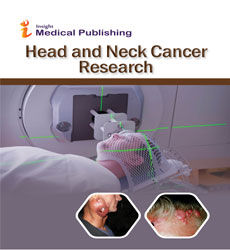CT Perfusion: A Step towards Organ Preservation in Head and Neck Malignancies
Lokesh Rana
DOI10.21767/2572-2107.100006
Lokesh Rana*
Radio-diagnosis, IGMC Shimla, India
- *Corresponding Author:
- Lokesh Rana
Radio-diagnosis, IGMC Shimla
India
Tel: 9418059266
E-mail: poojalokesh2007@gmail.com
Received date: Dec 14, 2015; Accepted date: Dec 25, 2015; Published date: Jan 20, 2016
Abstract
CTP (computed tomography perfusion) has emerged as a non-invasive functional imaging tool providing quantitative parameters regarding angiogenesis and tumor perfusion which can predict the response, monitor the effects and assess long term treatment outcome in HNSCC (head and neck squamous cell carcinoma).
Introduction
World Health Organization estimated that there were 6,00000 new cases of head and neck cancer and 3,00000 deaths each year worldwide. With such high prevalence there was definitely need a technique which could predict well before whether particular growth would respond to chemoradiotherapy and if not patient to go for surgical treatment. CT perfusion had proved through several cohort studies answer to this important question thus promoting organ preservation.
CTP (computed tomography perfusion) has emerged as a non-invasive functional imaging tool providing quantitative parameters regarding angiogenesis and tumor perfusion which can predict the response, monitor the effects and assess long term treatment outcome in HNSCC (head and neck squamous cell carcinoma). CTP can explore the molecular nature of tumor perfusion in addition to information about size and enhancement of tumor as done with conventional CT (computed tomography).
Four perfusion parameters namely BF, BV, PS and MTT were assessed quantitatively and analysis was made to determine which one of these perfusion parameters co-related well with treatment outcome as per RECIST 1.1 criteria.
MVD (micro-vascular density) which is pathological marker of angiogenesis is considered as predictor of response in HNSCC. MVD requires endoscopic biopsy and is an invasive procedure carrying its own risk factors. CTP is a non-invasive measurement of intra tumoral MVD which has a prognostic value.
Studying dynamics of perfusion parameters of tumor help in understanding the therapy induced functional changes in tumor tissue and help in distinguishing responder from nonresponders.
Earlier studies show that CTP revealed that HNSCC have increased BF, BV, PS and reduced MTT as compared to normal tissue and benign lesions and during the course of chemoradiation, responders showed a significant reduction in BF and BV whereas non-responders showed a non-significant elevation of BF and BV.
However in our workup in our institute at IGMC Shimla (India), we further researched on it and found different results some agreeing to previous results some not at all, we found BF, BV and PS decreased significantly while MTT increased insignificantly at 66Gy as compared to baseline irrespective of the treatment outcome. BF>135 ml/100 gm/min was nearly 100% predictive of complete response, while BF>85 ml/100 gm/min could predict complete response in 92% of case. Similarly BV>10 ml/100 gms could predict complete response in 75% cases. MTT less than 7 seconds could predict response in 67% cases. Combination of high BF (>104 ml/100 gm/min) and low PS (<38 ml/100 gm/min) was 100% predictive of response to CRT irrespective of the stage of tumor. Thus Combination of high BF and low PS is 100% predictive of response irrespective of the stage of tumor. Higher baseline BF values predicted good response before commencement of the treatment. Higher Z-axis coverage enables more extensive data sampling of large lesions.
CTP provides robust technique in histologically proven HNSCC in predicting the treatment response before the commencement of therapy; determine the changes in perfusion parameters during the course of treatment and after completion of chemo radiation therapy and thus contributing in all important organ preservation.
Open Access Journals
- Aquaculture & Veterinary Science
- Chemistry & Chemical Sciences
- Clinical Sciences
- Engineering
- General Science
- Genetics & Molecular Biology
- Health Care & Nursing
- Immunology & Microbiology
- Materials Science
- Mathematics & Physics
- Medical Sciences
- Neurology & Psychiatry
- Oncology & Cancer Science
- Pharmaceutical Sciences
